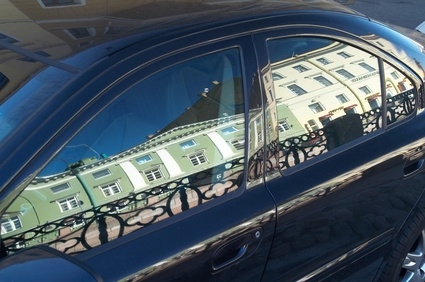
In Louisiana, where it's sunny almost all year round, most people prefer car windows to have some sort of tint. Window tinting is a common and legal practice that protects passengers from sun exposure and gives vehicles an attractive look. There are some legal limitations on the shade and placement of the tint.
Louisiana tint laws are applicable to and enforced against manufacturers, distributors and sellers of tinting devices and services, as well as drivers of illegally tinted vehicles. A driver found in violation of tint laws may be fined anywhere from $150 to $300, depending on the level of offense. A tint manufacturer, distributor or seller in violation may be fined $1,000 for a first offense and $2,000 for a second offense. Subsequent offenses may result in the distributor, manufacturer or seller being barred from continuing to sell and manufacture tinting supplies.
Louisiana state troopers use tint meters that gauge the amount of visible light being transmitted through the windows to measure the opacity level of window tint. The legal limit for the tint on front side windows is 40 percent, meaning the windows must allow more than 40 percent of sunlight in through those windows. The legal limit for back side windows is 25 percent. They must allow in at least 25 percent of sunlight. Rear windows have a tint limit of 12 percent and front windshields are able to have a non-reflective tint along the top of the windshield, above the AS-1 line, which is a spot marked by the glass manufacturer.
Some tints are designed to reflect the sunlight in the same way that reflective sunglasses are meant to in order to minimize glare and heat caused by sunlight. Front and back side windows may be no more than 20 percent reflective.